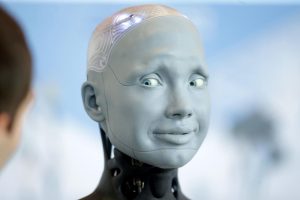For Yunkaporta, the dangers of AI are rooted in its failure to understand the concept of home—and it is why we must ground it in kinship (Earth). “Home is at the center of what it is to be human,” he says, referring to the interconnected and interdependent relationships between all aspects of life. From an Aboriginal perspective, the algorithm’s inability to understand our kinship with all ecosystems makes it homeless, incapable, in its current guise, of being anything other than extractive because that is all that it is programmed to understand.
To further show the limitations of AI in its current form, I created a thought experiment for a recent artificial intelligence event: Gaia, an AI, is tasked with transitioning London to clean energy sources like solar and wind power. However, Gaia lacks the understanding of “home,” the interconnected relationships and cultural significance that make a place meaningful. Gaia might prioritize efficient and immediate power needs, opting for quick fixes like temporary energy sources that disrupt local communities or ecosystems. In doing so, Gaia overlooks the long-term impacts on residents’ sense of place, community well-being, and environmental health, demonstrating its failure to grasp the deeper, interconnected concept of “home.”
“Everything is entangled with that idea of home,” says Yunkaporta. “An AI will not be able to replicate human communication or thought without not only understanding what we think home is, or what home is for real beings in the world, flesh and blood beings, but they would also have to have an authentic identity that was situated in a home.”
As we delve into the implications of AI, it becomes clear that—without the transformative power of traditional knowledge and elemental wisdom—today’s systems risk reinforcing hierarchies that benefit those who uphold dominant narratives. The solution, Yunkaporta says, lies in the nature of the questions that need to be asked to those who are closer to the axis of power. “Look at everything, all your relationships and your data analysis. And your design and everything,” he says. The lessons that nature—and its elements—can teach us must be central to the new worlds we are building.
The elemental approach to asking deep questions exemplifies how ancestral and Indigenous protocols can guide us into creating a more holistic, equitable, sustainable, and even possibly regenerative world. It emphasizes the interconnectedness and power redistribution through collaborative design, integrating Indigenous kinship protocols. Ether, Air, Fire, Water, and Earth become metaphors to foster holistic questioning, ensuring technological innovations respect and enhance our relationships with all life forms.
Shaped by these elemental principles, Yunkaporta’s insights suggest that we should look towards Queer, Non-binary, and Two-Spirit communities to lead emerging systems, innovations and technologies. Our innate inability to exist beyond binary spaces makes us ideal candidates to empathetically and compassionately transcend the status quo. By embracing these Indigenous and ancestral approaches, we can create a more equitable and regenerative future; one in which AI can challenge us to consider more deeply, and with greater compassion, “What type of Ancestor do you want to be?”



